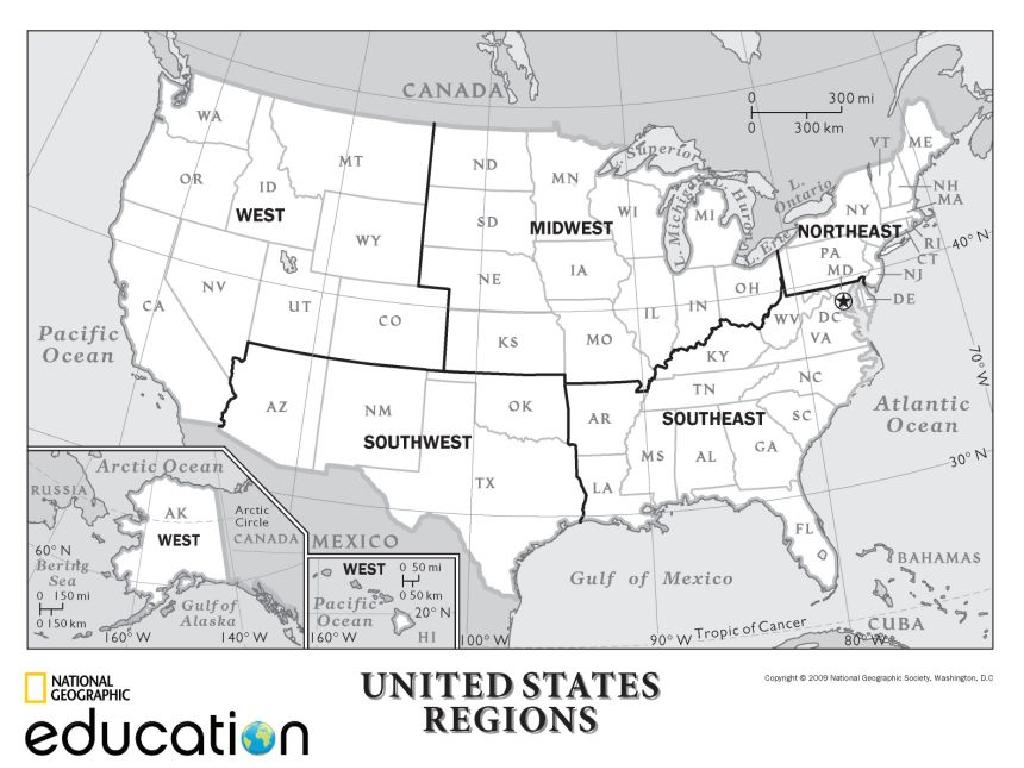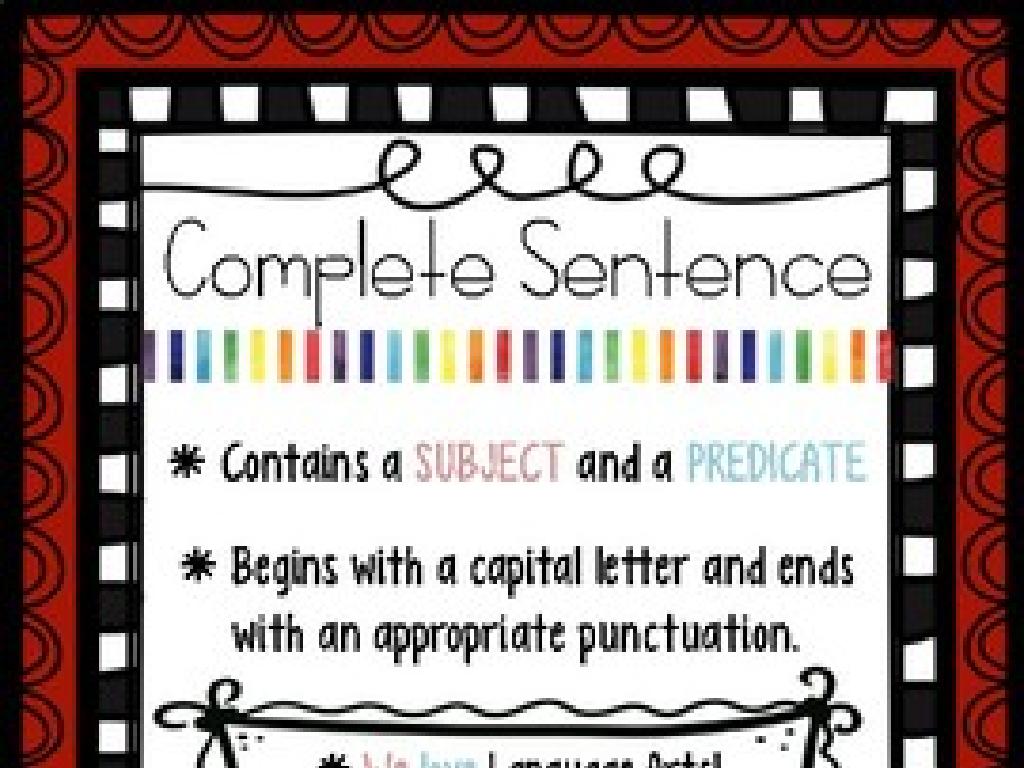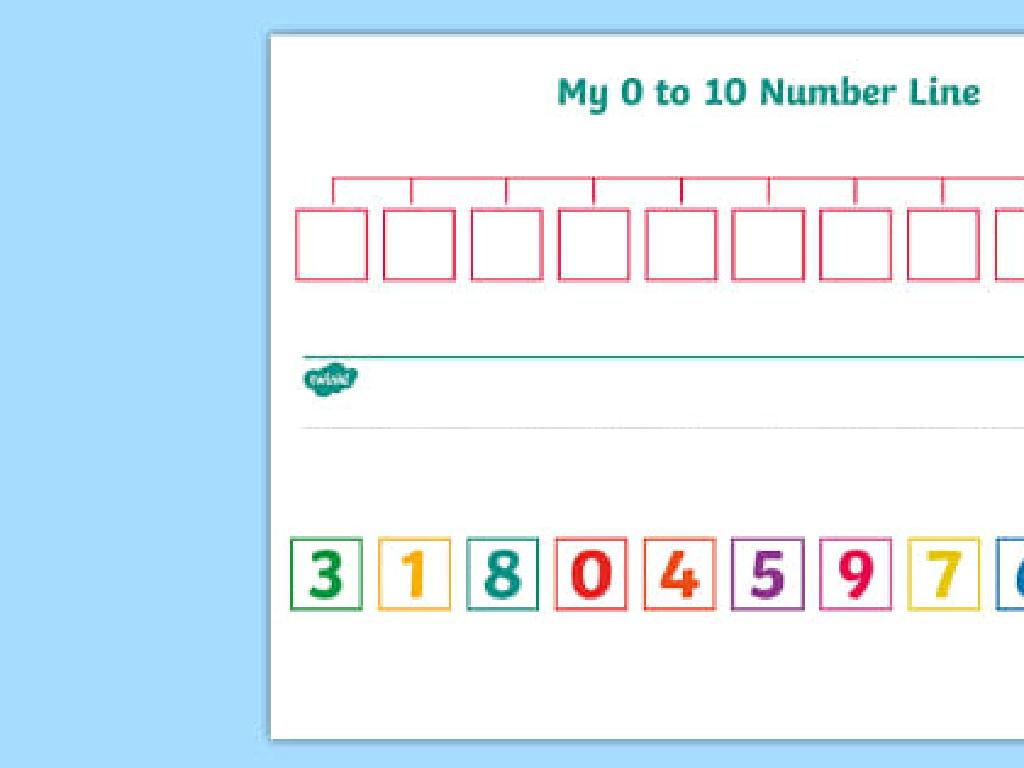Multiplication And Division Facts Up To 10
Subject: Math
Grade: Third grade
Topic: Mixed Operations: Multiplication And Division
Please LOG IN to download the presentation. Access is available to registered users only.
View More Content
Welcome to Multiplication and Division!
– Becoming math magicians today
– Multiplication & division are linked
– Multiplying makes things bigger, dividing makes them smaller
– Learn facts up to 10
– We’ll memorize 2×3=6 and how 6÷2=3
– Practice makes perfect
– We’ll do fun activities to help these facts stick!
|
This slide introduces the concept of multiplication and division to third graders, setting a fun and engaging tone by inviting them to become ‘math magicians.’ Emphasize the relationship between multiplication and division as inverse operations. The goal for this lesson is for students to understand and memorize multiplication and division facts up to 10. Use examples like ‘If we have 2 groups of 3, that’s 2×3=6. If we divide 6 into 2 equal groups, each group has 3, so 6÷2=3.’ Plan activities such as flashcards, group games, and timed quizzes to reinforce these concepts. Encourage students to practice regularly as homework to solidify their understanding.
Understanding Multiplication
– Multiplication as repeated addition
– Example: 3 x 2 is 2 + 2 + 2
– Instead of adding 2 three times, we can multiply 3 by 2
– Practice with class examples
– We’ll solve multiplication problems as a group
– Multiplication facts up to 10
– Learn and memorize the multiplication table
|
This slide introduces the concept of multiplication to third-grade students by relating it to the more familiar operation of addition. Start by explaining that multiplication is a shortcut for adding the same number multiple times. Use the example on the slide to illustrate this point. Then, engage the class with interactive examples, asking them to solve simple multiplication problems together. Emphasize the importance of learning multiplication facts up to 10, as these are the building blocks for more advanced math. Encourage students to memorize the multiplication table through practice and repetition. Provide additional examples and use manipulatives if necessary to help students visualize the concept.
Mastering Multiplication Facts
– Memorization makes math simpler
– Let’s practice with a song or game
– Engage with music or interactive play to learn
– Use the multiplication chart
– A visual tool to find answers quickly
– Practice leads to mastery
– Consistent practice ensures long-term retention
|
This slide is aimed at helping third-grade students understand the importance of memorizing multiplication facts up to 10, as it is foundational for more advanced math concepts. Introduce the concept with enthusiasm to motivate the students. Incorporate a fun song or game to make the learning process enjoyable and memorable. Demonstrate how to use a multiplication chart effectively as a reference tool. Emphasize the value of regular practice to build confidence and proficiency in multiplication. During the lesson, encourage participation, and consider breaking the class into groups for collaborative learning through games. Provide examples and lead the class in a sing-along or interactive game that reinforces the multiplication facts.
Understanding Division
– Division: Splitting into equal parts
– Division is opposite of multiplication
– Example: 6 ÷ 2 equals 2 groups
– 6 items divided into 2 groups gives 3 items per group
– Division as sharing equally
– Imagine sharing 6 apples with 2 friends equally
|
This slide introduces the concept of division to third-grade students by relating it to the idea of splitting items into equal groups. It’s important to emphasize that division is essentially the reverse process of multiplication. Use tangible examples, such as dividing a set number of items like apples or toys, to illustrate the concept. The example provided uses 6 items divided by 2 to show that each group ends up with 3 items. Encourage students to think of division as a fair sharing method. During the lesson, use manipulatives or drawings to visually demonstrate the division process, and ensure students understand that division is another way to organize and distribute items evenly.
Mastering Division Facts
– Division facts speed up problem-solving
– Multiplication and division are related
– If 3 x 4 = 12, then 12 ÷ 4 = 3 and 12 ÷ 3 = 4
– Practice division facts with examples
– Example: 9 ÷ 3 = ? or 16 ÷ 4 = ?
– Division is the inverse of multiplication
|
This slide aims to reinforce the understanding of division facts and their connection to multiplication. Emphasize that knowing division facts allows students to solve problems more quickly and efficiently. Highlight the inverse relationship between multiplication and division, using familiar multiplication facts to derive division facts. During practice, provide examples and encourage students to use multiplication tables they already know to find the answers to division problems. This will help them see the patterns and relationships between the two operations.
Relating Multiplication and Division
– Multiplication makes bigger numbers
– Example: 4 x 5 = 20 makes a bigger number
– Division breaks into smaller groups
– Example: 20 ÷ 5 = 4 breaks 20 into smaller groups of 5
– Inverse operations explained
– Multiplication and division undo each other
– Checking work with multiplication/division
– Use multiplication to check division and vice versa
|
This slide aims to help students understand the relationship between multiplication and division. Start by explaining that multiplication combines groups to make a larger number, while division breaks a number into equal smaller groups. Emphasize that these operations are inverses of each other, meaning they can undo what the other does. This is a key concept that can be used to check the accuracy of their work; if they multiply the quotient and divisor of a division problem, they should get the dividend. Encourage students to practice with different numbers up to 10 to solidify their understanding.
Let’s Practice Together: Multiplication & Division
– Class practice problems
– Use charts for help
– Refer to your multiplication and division charts if you’re stuck
– Practice leads to perfection
– The more you practice, the better you’ll get!
– Share answers with the class
– Discuss how you got your answers
|
This slide is designed to engage the class in a collaborative practice session on multiplication and division facts up to 10. Encourage the students to use their multiplication and division charts as a reference tool to solve the problems. Emphasize the importance of practice in mastering these fundamental math skills. After solving the problems, students should be ready to share their answers and discuss the strategies they used. This will not only help them learn from each other but also reinforce their understanding. As a teacher, circulate the room to provide guidance and ensure that each student is participating and on the right track. Prepare a set of problems that vary in difficulty to cater to different skill levels within the class.
Math Magician Showdown: Mixed Operations
– Pair up for a math challenge
– Say a multiplication fact
– Example: ‘3 x 4′
– Respond with a division fact
– Example: ’12 ÷ 4 = ?’
– Aim for the most correct in 5 mins
|
This class activity is designed to reinforce the relationship between multiplication and division. Students will work in pairs to practice fluency in recalling multiplication and division facts up to 10. One student will state a multiplication fact, and the partner must respond with the corresponding division fact. For example, if one student says ‘3 x 4′, the other should respond with ’12 ÷ 3 equals what?’ or ’12 ÷ 4 equals what?’. The goal is to get as many correct answers as possible within a five-minute period. This exercise encourages quick thinking and helps solidify the concept that multiplication and division are inverse operations. Teachers should monitor the pairs for correct answers and provide guidance as needed. Possible variations of the activity could include using flashcards, timed races, or group competitions.
Great Work, Math Magicians!
– Congratulations on today’s learning
– Homework: Multiplication & Division worksheet
– Complete the provided worksheet to review today’s lesson
– Practice your facts regularly
– Daily practice helps improve speed and accuracy
– Aim for mastery with practice
– Keep practicing to become a multiplication and division wizard
|
Today’s class focused on reinforcing multiplication and division facts up to 10. As a conclusion, praise the students for their efforts and remind them that practice is key to mastering these concepts. For homework, they are assigned a worksheet that covers the day’s material, which will help them to solidify their understanding. Encourage them to practice these facts daily, as this will help them to become more confident and proficient in their math skills. During the next class, review the homework answers and address any difficulties the students encountered. Remember, consistent practice leads to success in math!





